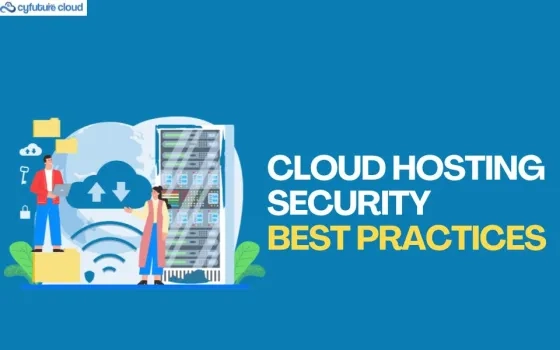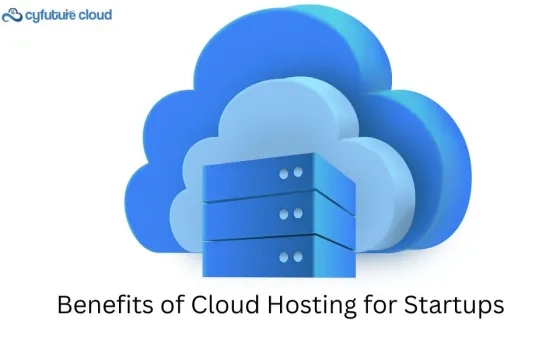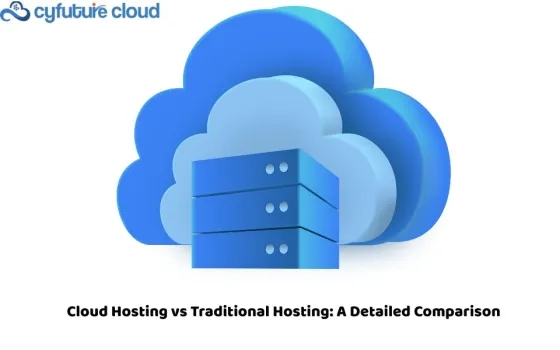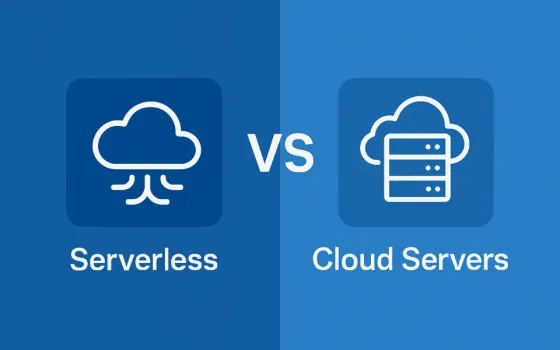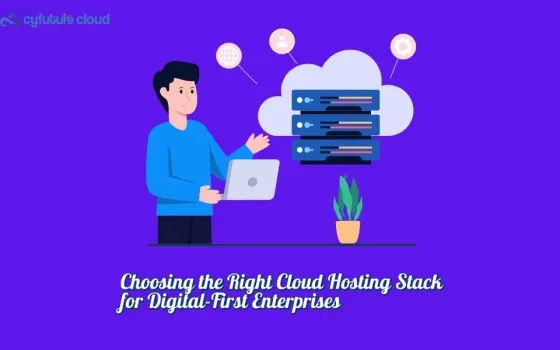In today's fast-paced digital landscape, businesses are constantly seeking ways to enhance their operational efficiency, reduce costs, and stay competitive. One of the most significant technological advancements that facilitate these goals is cloud computing. Transitioning from traditional on-premises infrastructure to the cloud offers numerous benefits, including scalability, flexibility, cost savings, and access to cutting-edge technologies. However, cloud migration is a complex process that requires careful planning and execution to ensure a seamless transition with minimal disruption to business operations. This article explores the intricacies of cloud migration, the types of cloud environments, the steps involved in the migration process, and the advantages of partnering with a trusted cloud migration service provider like Cyfuture Cloud.
Understanding Cloud Migration
Cloud migration refers to the process of moving digital assets, such as data, applications, and IT infrastructure, from on-premises environments or other cloud platforms to a cloud-based environment. The goal is to leverage the cloud's advantages, including scalability, flexibility, cost-efficiency, and enhanced performance. Cloud migration is not a one-size-fits-all solution; it requires a tailored approach based on an organization's specific needs and objectives.
Types of Cloud Environments
Before embarking on a cloud migration journey, it's essential to determine the most suitable cloud environment for your organization. There are three primary types of cloud environments: public, private, and hybrid.
- Public Cloud: In a public cloud environment, services are delivered over the internet by a third-party provider, such as Amazon Web Services (AWS), Microsoft Azure, or Google Cloud Platform. Public clouds offer high scalability and cost-efficiency, making them ideal for organizations with variable workloads and limited IT budgets.
- Private Cloud: A private cloud is a dedicated environment designed for a single organization. It provides enhanced security, control, and customization compared to public clouds. Private clouds are suitable for businesses with stringent regulatory requirements, sensitive data, and specific performance needs.
- Hybrid Cloud: A hybrid cloud combines elements of both public and private clouds, allowing organizations to benefit from the scalability of public clouds while maintaining control over critical workloads in private clouds. Hybrid clouds offer flexibility and can be tailored to meet diverse business requirements.
The Cloud Migration Process
Cloud migration involves several stages, each requiring careful planning and execution to ensure a successful transition. The following steps outline a comprehensive approach to cloud migration:
Assess and Plan
The first step in any cloud migration journey is to conduct a thorough assessment of your current IT environment. This includes identifying the applications, data, and infrastructure components that need to be migrated. Key considerations during this phase include:
- Current State Analysis: Evaluate the existing on-premises infrastructure, applications, and data to understand their dependencies and performance requirements.
- Migration Goals: Define the objectives of the migration, such as cost savings, scalability, performance improvement, or enhanced security.
- Cloud Environment Selection: Determine the most suitable cloud environment (public, private, or hybrid) based on your organization's needs.
- Cost-Benefit Analysis: Analyze the costs associated with the migration and compare them to the expected benefits to ensure a positive return on investment (ROI).
Design and Architect
Once the assessment is complete, the next step is to design the cloud architecture and develop a detailed migration plan. This phase involves:
- Cloud Architecture Design: Create a cloud architecture that aligns with your business goals and supports your applications and workloads.
- Migration Strategy: Develop a migration strategy that outlines the sequence of migration activities, including prioritizing applications based on their criticality and complexity.
- Security and Compliance: Implement robust security measures and ensure compliance with industry standards and regulations.
Pilot and Test
Before executing the full-scale migration, it's crucial to conduct a pilot migration to identify potential issues and validate the migration strategy. During this phase:
- Pilot Migration: Select a small set of applications or workloads to migrate as a pilot. This allows you to test the migration process and identify any challenges.
- Performance Testing: Conduct performance and stress testing to evaluate the migrated applications' performance under different load conditions.
- Issue Resolution: Address any issues identified during the pilot migration to ensure a smooth transition during the full-scale migration.
Execute Migration
With the pilot migration successfully completed and any issues resolved, it's time to execute the full-scale migration. This phase involves:
- Data Migration: Transfer data from on-premises systems to the cloud using secure and efficient data transfer mechanisms.
- Application Migration: Migrate applications to the cloud environment, refactoring or rearchitecting them as needed for cloud compatibility.
- Infrastructure Migration: Move physical or virtual infrastructure components, such as servers, storage, and networking, to the cloud.
Validate and Optimize
After the migration is complete, it's essential to validate the migrated assets and optimize their performance. This phase includes:
- Validation: Ensure the functionality, integrity, and data consistency of the migrated applications and data.
- Performance Optimization: Fine-tune configurations, optimize resource allocation, and implement performance-enhancing techniques such as caching and content delivery networks (CDNs).
- Security Review: Conduct a comprehensive security review to ensure that all security measures are in place and functioning as expected.
Ongoing Support and Monitoring
Cloud migration is not a one-time event; it requires ongoing support and monitoring to ensure the continued performance and security of the cloud environment. This phase involves:
- Continuous Monitoring: Implement monitoring tools to track the performance, availability, and security of the cloud environment.
- Support Services: Provide round-the-clock technical support to address any issues and optimize the cloud infrastructure.
- Regular Updates: Keep the cloud environment up to date with the latest security patches and software updates.
Advantages of Partnering with Cyfuture Cloud
While cloud migration offers numerous benefits, it can be a complex and resource-intensive process. Partnering with a trusted cloud migration service provider like Cyfuture Cloud can significantly enhance the success of your migration journey. Here are some key advantages of choosing Cyfuture Cloud:
Expertise and Experience
Cyfuture Cloud brings extensive expertise and experience in cloud migration, backed by a team of skilled professionals who understand the complexities of migrating diverse workloads and applications to the cloud. Their comprehensive knowledge ensures a smooth and efficient migration process.
Robust Security and Compliance
With a strong focus on security and compliance, Cyfuture Cloud ensures the protection of your data throughout the migration process. They adhere to industry standards and implement robust security controls, such as encryption, secure network protocols, and access controls, to safeguard your data.
Seamless Cloud-to-Cloud Migration
Cyfuture Cloud facilitates easy workload and data transfer between various cloud environments, ensuring compatibility and interoperability. This enables organizations to switch from one cloud provider to another with minimal disruption to business operations.
Performance Optimization
Utilizing cloud-native technologies and optimization techniques, Cyfuture Cloud enhances the performance of migrated workloads. They analyze existing systems, identify performance bottlenecks, and optimize configurations to ensure optimal performance in the cloud environment.
Cost-Effective Migration
By offering free migration services, Cyfuture Cloud provides a cost-effective option for moving your applications and data to the cloud. This reduces the financial strain of the migration process and allows organizations to realize cost savings quickly.
Ongoing Support and Monitoring
Post-migration, Cyfuture Cloud provides continuous monitoring, support, and maintenance services to ensure the availability, performance, and security of your cloud environment. This allows organizations to focus on their core business while Cyfuture Cloud manages the operational aspects.
Conclusion
Cloud migration is a transformative journey that enables organizations to harness the power of cloud computing to drive innovation, enhance efficiency, and achieve cost savings. By carefully planning and executing the migration process and partnering with a trusted provider like Cyfuture Cloud, businesses can navigate the complexities of cloud migration with confidence. With their expertise, robust security measures, seamless cloud-to-cloud migration capabilities, and ongoing support, Cyfuture Cloud ensures a successful and disruption-free transition to the cloud, empowering organizations to thrive in the digital age.
As business requirements continue to evolve, the ability to adapt and modify IT infrastructure becomes increasingly crucial. Cloud migration not only bridges the gap between growing business needs and IT capacity but also enhances the performance and accessibility of critical business operations. By identifying areas of risks and opportunities, cloud migration services provided by Cyfuture Cloud effectively mitigate risks, optimize performance, and implement sustainable practices, resulting in future business growth. Embrace the future with Cyfuture Cloud and experience the benefits of efficient, seamless, and secure cloud migration.









